There are several good books about Swedish and European dragonflies, my favorites are (in author alphabetcial order):
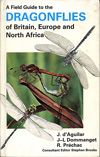 |
A Field Guide to the Dragonflies of Britain, Europe and North Africa contains quite nice color drawings of nearly all adult dragonfly species in Europe. The highly detailed larva drawings are in black and white. Different dragonfly ecosystems are described with quite good photographs. Every sort of dragonfly is described in detail with a short identification text, intraspecific variations, habitat, behavior and distribution, (with text and map). Some of the distribution maps for the Swedish species differs from my own experience, thus I think that one should not rely too much in those maps, there might be such confusion in those maps even for the rest of Europe. If you are uncertain whether or not a specific dragonfly occurs in an area, check with another book to make sure.
A key to the dragonflies of Europe also is included, I haven't used this key and thus I haven't any opinion about it's quality.
This book even contains a couple of color photographs of different dragonflies, those pictures are quite nice, but I don't agree with the cover text that refers to them as "remarkable close-ups".
I use this book as a reference book to consult when my usual field guide isn't enough for correct identifications in difficult cases. |
| |
|
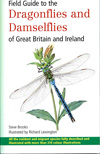 |
A field guide to the dragonflies and Damselflies of Great Britain and Ireland is a book about the distribution of the dragonflies in Great Britain and Ireland, their habitats, threats and history. The book also contains a map with good places for dragonfly studies in Great Britain and Ireland, very useful for the touristing odonatologist. The larva key is a common one with drawings of the details of the larvae, as a complement 16 damselfly and dragonfly larvae are shown with photos. The adult key uses color drawings of each dragonfly and some interesting details. Each dragonfly is described in a detailed text, several odonatologists have contributed to these texts. The quality of the many color photos are very good. This book is essential for the British and Irish odonatologist as well for other odonatologists visiting this area. |
| |
|
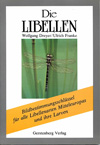 |
Die Libellen ("The Dragonflies") is a small but nice book in German containing keys with pictures to all the dragonflies of Middle Europe. The first key covers the adult dragonflies and the second the larvae. Eleven photos in color shows some interesting dragonflies. |
| |
|
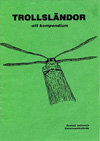 |
Trollsländor - ett kompendium ("Dragonflies - a compendium") is a small booklet in Swedish. It contains "Fältbiologernas fickguide till Sveriges trollsländor" (Fältbiologerna's pocket guide to the Swedish dragonflies),a small key that covers all Swedish dragonfly families, but not all species. A couple of dragonfly games are also described; what about Dragonfly charades? Some ideas about activities for dragonfly courses, specially for children are also included. |
| |
|
| |
Vad jag finner i sjö och å ("What I find in lake and river") is a Swedish translation of the Danish book: "Had finder jeg i sø og å", it contains the most animals that lives in fresh water, except for fishes. Six pages are about dragonflies, both adult and larvae of 15 species are nicely, but not very detailed viewed with drawings in color. Most of the Swedish names that occurs are wrong! Directly translated from Danish? One Latin name is also wrong: "Agrion puella" should be "Coenagrion puella". The very short texts about every species also contains some "strange" facts. The good thing with this book is that it describes so may different families of fresh water insects. Sometimes one finds some interesting insect that isn't a dragonfly and then it's nice to be able to at least find the correct family. |
| |
|
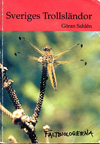 |
Sveriges Trollsländor ("Dragonflies of Sweden") is the Swedish "standard" book about the Swedish dragonflies, in fact it covers all the Scandinavian species. The key deals with both adults and larvae and its quite easy to use. The distribution maps are very accurate, but local differences might occur. Every species is illustrated with several highly detailed black and white drawings. Every species are described in texts, distribution, larva identifications, adult identification habitat & behavior and observed flying-time. One chapter deals with field studies of dragonflies and another deals with breeding of larvae. This book is quite cheep, and the high quality of the texts and pictures makes this to the very best of the Swedish dragonfly books. |
| |
|
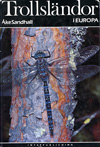 |
Trollsländor i Europa ("Dragonflies in Europe") is a very high quality book that covers every European Dragonfly sort, except for a few Mediterranean species. Every species are described by several very high quality photos. A short Swedish text and distribution maps of every species are included. The distribution maps are accurate and easy to read. The key to the European dragonflies are totally text-free, only drawings. This key together with the fantastic photos makes this book useful for all persons interested in the European dragonflies whether or not you can Swedish. |
| |
|
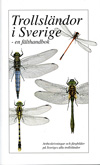 |
Trollsländor i Sverige- en fälthandbok A nice book in small format, fits easily into the pocket. Colour drawings of all Swedish dragonflies including the ones that have been found in Sweden the latest years. The colour drawings makes it very useful for people who are not athat familiar with dragonflies. The book does not cover larva and does not have any distribution maps. Every species is described with a short text in Swedish, there are also some general texts about dragonflies. The book could be ordered from: Enotomologiska föreningen i Stockholm, Box 50007, 104 05 Stockholm or by calling or mailing bert Gustafsson phone +46 08 519 540 89, mail bert.gustafsson@nrm.se |
| |
|
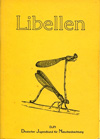 |
Libellen ("Dragonflies") is a nice German book with key for most European dragonflies. Every species are described in a short text, with characteristic details, flying period, preferred habitat and grade of threat within the German-speaking world. (Germany, Austria and Switzerland) Characteristic details even shown with drawings. Distribution maps are quite small and thus quite hard to read, for Sweden they differs a lot from my own experience. The texts about life cycle, habitat, threats, protection, catching etc. are good but fairly short. The book is quite easy to read even for persons, who like me are not fluent in German. The only major thing I miss in this book is a larva key. |









